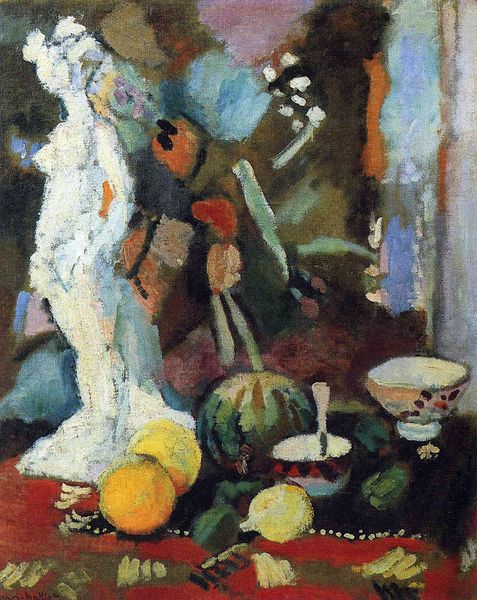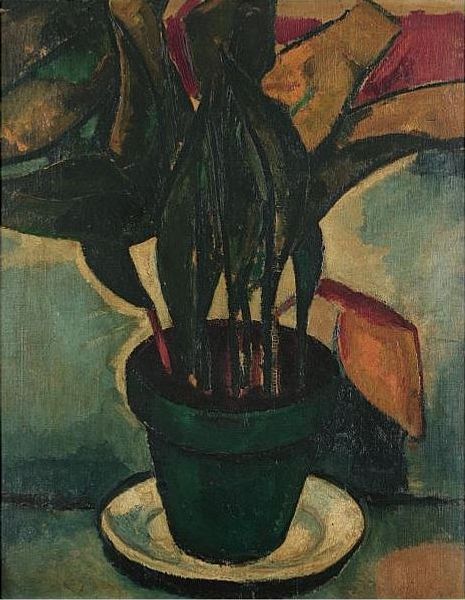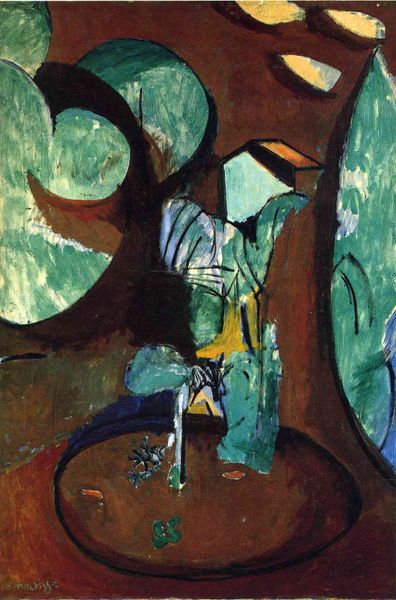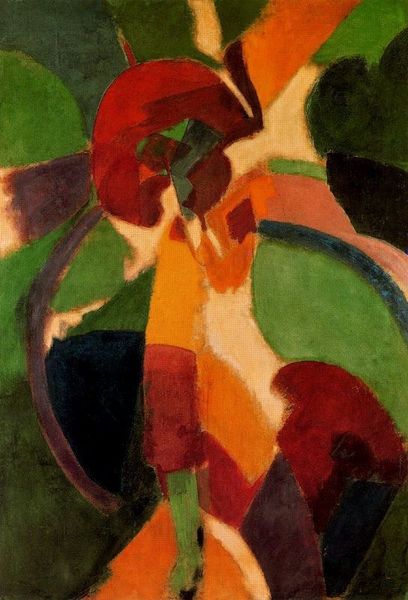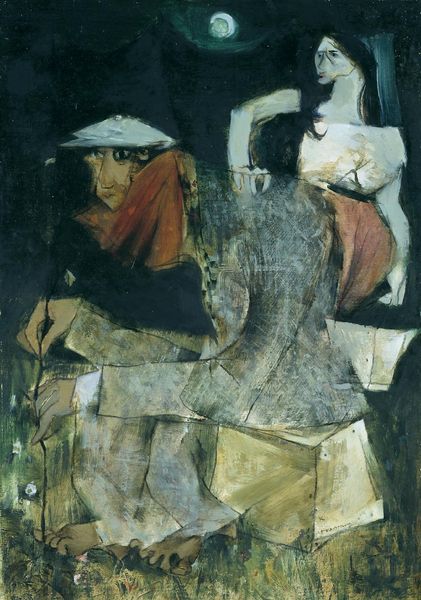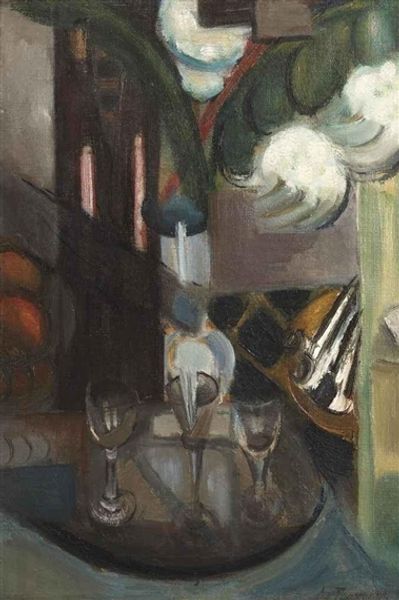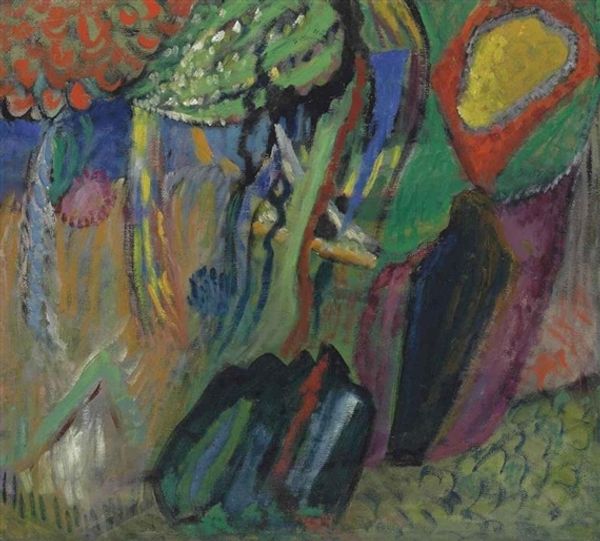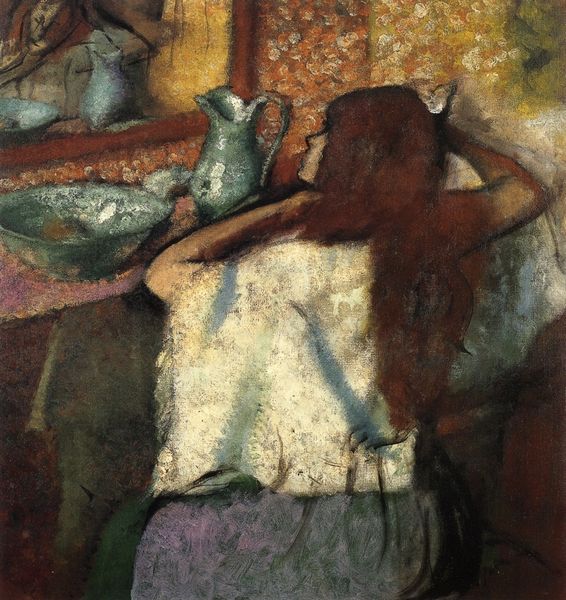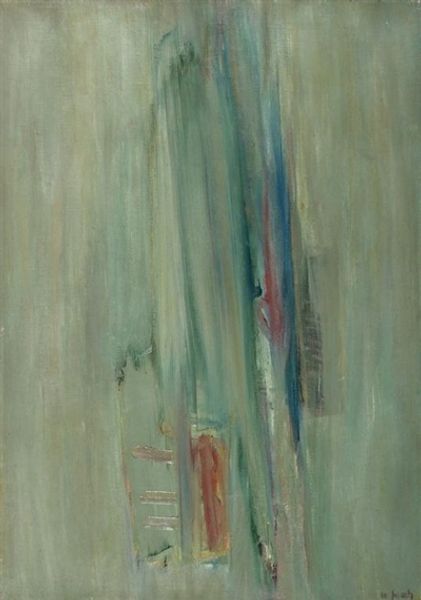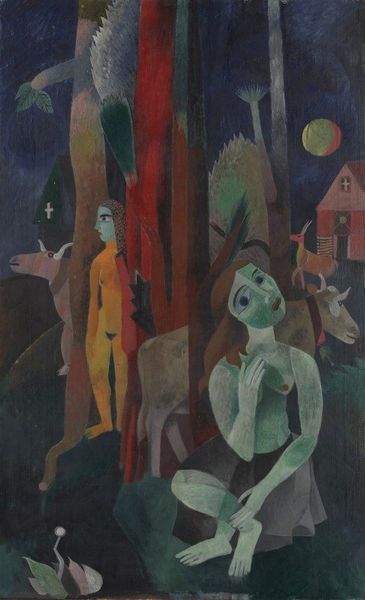
Dimensions: 91 x 74 cm
Copyright: Public domain US
Curator: Well, hello there! This is Henri Matisse's "Sun's Ray," an oil painting from 1917 currently residing in a private collection. Editor: It feels rather unsettling. Those jagged forms—they’re almost violently abstract, certainly a far cry from the relaxing landscapes I usually associate with the Mediterranean. It makes me think about how labor was organized during the war time. Curator: I think the "violent" abstraction is what’s fascinating here. Look at how Matisse simplifies the landscape down to near-geometric shapes. There's a deliberate rawness in the application of the oil paint, thick and almost aggressively laid down, especially when we know that painting oil required access to specific resources and trade networks during wartime. Editor: Absolutely, it's undeniable that access to materials and methods were key, and the scarcity influenced aesthetic decisions. It reminds us of the politics surrounding art creation and distribution back then. Yet, what was the social mood shaping this angular perspective of nature? Did people appreciate these explorations of nature, at that point in time? Curator: This Fauvist piece breaks with conventional landscape art through his rejection of any naturalistic aesthetic! Traditional harmony between color and form is abandoned. And he did exhibit during wartime. The reception could vary depending on whether critics saw his distortions as patriotic displays of rugged resilience or too disturbing amidst social chaos! It all hinges on the consumption, and understanding of labor involved with producing these objects in such volatile contexts. Editor: Context, as always, is key. Viewing it now, knowing when it was created and how the public experienced shows how art plays a central role not just mirroring society but as a reflection of a changing perspective of life in society. We learn as much about 1917 as about Henri Matisse. Curator: Precisely, it is not simply pretty. Matisse used materials to build a reality, mirroring larger sociopolitical structures influencing his every move. It really drives the need to question what went into this landscape… how far materials had to be sourced… What restrictions governed its fabrication. Fascinating. Editor: It does urge one to think beyond the canvas, and ask who this art truly served, at a period in time where global access, funding, labor and leisure came under immense re-evaluation. A brutal, yet revealing meditation on how context shapes the act and appreciation of painting itself!
Comments
No comments
Be the first to comment and join the conversation on the ultimate creative platform.
